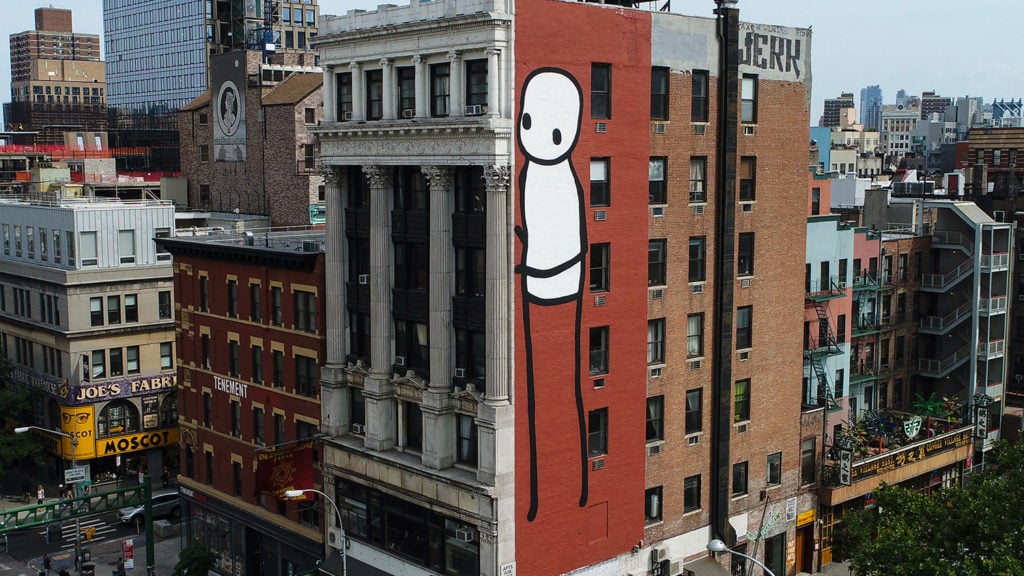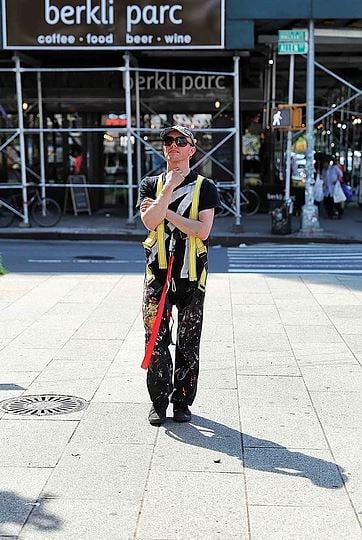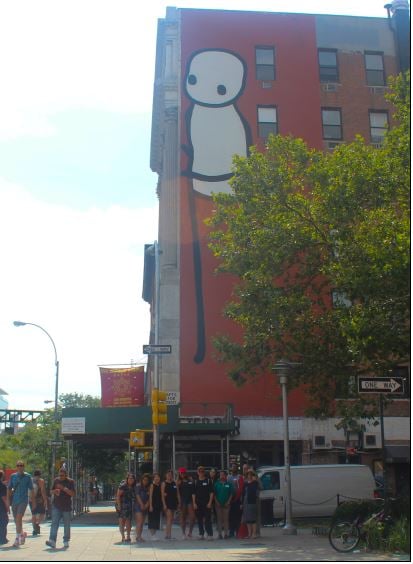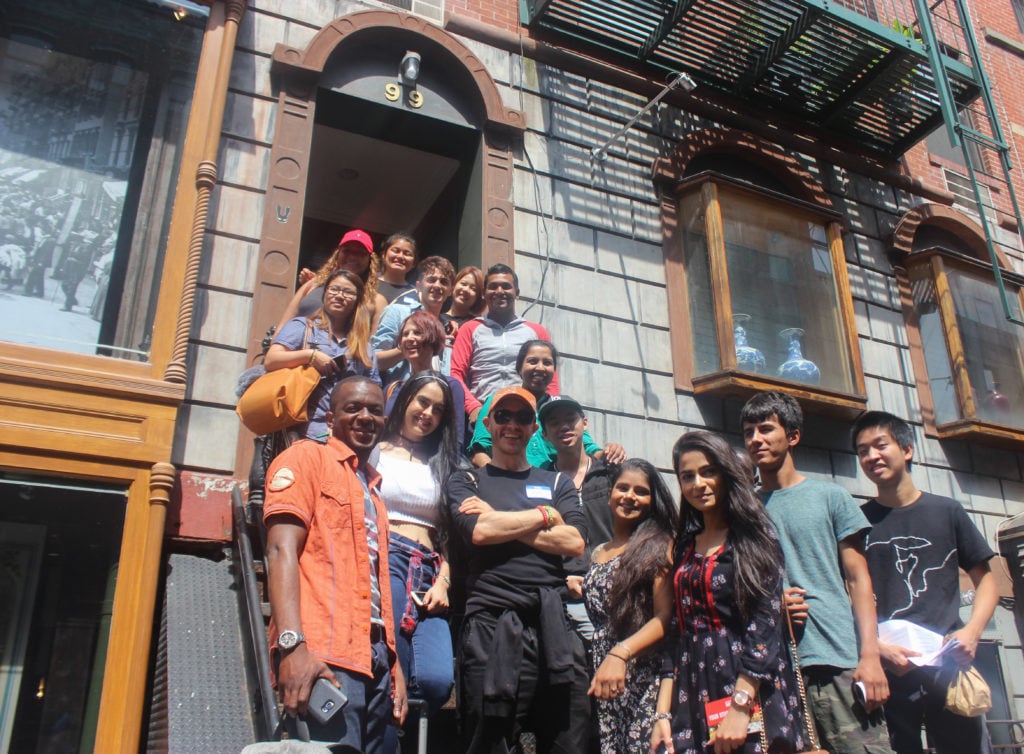Blog Archive
Sharing a Journey on the Ave. of Immigrants

photo from Patch.com
Peeking around the corner of Allen and Delancey Streets is a lone figure. Standing seven-stories high, it has no gender, no age, no race or religion, and so it encompasses them all. The only thing one can tell by looking at it is the feeling of anxiousness and anticipation. It is both seeking something in front of it and apprehensive about what it might find.
It is “Migrant,” the latest mural painted by British street artist Stik. This is Stik’s third mural in New York City, and they all draw on the city’s rich history. His piece “Liberty” in Tompkins Square shows solidarity with the workers riots of 1874, as well as the 1988 housing riots. The mural in Union Square on a water tower, of people joined hand in hand, is a symbol of unity with the men and women who marched in the first Labor Day Parade in 1882.
Stik came to the Lower East Side to paint, and became inspired by the diverse and vibrant history of the neighborhood, after discovering that Allen Street is also known as the “Avenue of the Immigrants.” He recently donated the proceeds from his gallery showing at Fat Free Art to the Tenement Museum, and took a Shared Journeys tour of the museum. Shared Journeys is a free program we offer to not-for-profit ESOL classes, which creates unique connections between past and present immigrants. The tour offers an important contextual level which really resonated for Stik.

Photo by Fat Free Art.
When did you start painting, and why?
I started painting my simple stick figures on the street back about 15 years ago in the East-End of London, as a way of making me and my community visible in the city. The figures have no mouths, which represent the people who live in the area making their presence felt, and humanising the changing city as a gentle form of resistance. People from the neighbourhood started to invite me to paint their walls, and so I had more freedom to create larger murals. Years later I am invited to paint with communities all over the world.
 How did you come to paint a mural on the Lower East Side?
How did you come to paint a mural on the Lower East Side?
The Lower East Side is going through a similar change to my own neighbourhood, and I feel a special resonance with the people who call it home. I was invited to paint by my friends at Fat Free Art, and you can see the working drawings for the mural at their gallery on Allen Street.
What inspired you to paint “Migrant”?
When I arrived to start painting, I sat in the café opposite [where the mural would be] and saw a signpost reading ‘Avenue of the Immigrants’. Nobody seemed to know about it, so I asked at the Tenement Museum, who gave me a potted history of why Allen Street is dubbed ‘Avenue of the Immigrants’ and the history of migration in the area. I decided there and then to make this the theme of the mural.
Did you visit the Tenement Museum before you began work on “Migrant”?
I knew about the museum and had seen the tour groups passing by the wall, but it wasn’t until I started digging that I found out how important the place actually is. They were helpful with my research into the history of the area I was painting in, and gave me a lot of their time.
How did our mission to tell America’s story through the history of immigration through the personal experiences of the generations of newcomers who settled in and built lives on Manhattan’s Lower East Side, affect what you decided to paint?
The Tenement Museum is so positive and pro-active, I was inspired to paint something that reflected that. The classical architecture and shape of the building was also a challenge that dramatically shaped the finished piece.

The proceeds of your work are supporting the Tenement Museum’s “Shared Journeys” program, which offers free classes for English Language Learners. You recently had the opportunity to sit in on a “Shared Journeys” class, join them for a tour, and talk to them about your work. Tell us about your experience. What did you discover about immigration history or about your fellow tour members you hadn’t previously known?
The Shared Journey’s tour opened my eyes to how people struggled to settle here in the past and the challenges they still face, their stories often tragic but told candidly and with humour. Taking the tour with a group of people who are going through that exact same process right now, and being an outsider myself, was a moving experience. I’m happy to have been able to support the project.
What kinds of emotions are you hoping to evoke with “Migrant”?
The giant figure is nervously looking around the corner, emerging into an unknown city but with hope in his chest and eyes cast upwards towards a brighter future. The figure is simple, an everyman transcending gender, religion and race, symbolising our universal wish to be accepted as human beings.
- Post by Gemma Solomons, Marketing & Communications Coordinator at the Lower East Side Tenement Museum